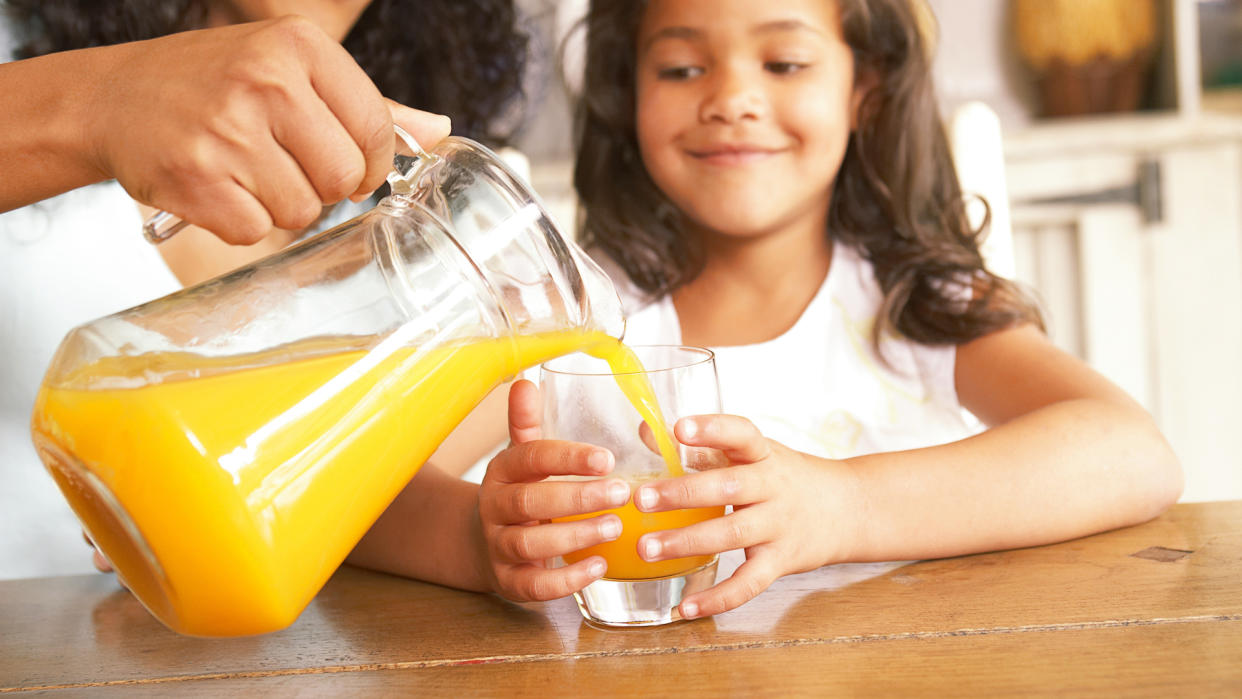Your Morning Orange Juice Is Getting More Expensive — Here’s Why (And It’s Not a Supply Chain Issue)

That glass of breakfast OJ Americans have been returning to since the start of the COVID-19 pandemic costs a lot more as we move into 2022 — but don’t go pointing your finger at the global supply chain crisis as the likeliest culprit.
See: Shipping Companies Had a $150 Billion Year Amid Supply Chain Woes — How Their Profit Was Your Loss
Find: Supply Chain Fix: Could Robot Trucks Fill Driver Shortages?
Instead, you can blame citrus disease, lousy weather — and supplies that have been stretched thin by an unexpected rise in demand for orange juice after two decades of falling sales.
Frozen orange juice futures have risen by more than half during the pandemic and hit a two-year high last week, CNN Business reported. On Thursday alone, they spiked 5%. Fruit juice and nonalcoholic drink prices are already up 5.7% in 2022 amid a broader trend that has seen overall food prices rise 6.5% over the past year.
“You have your classical supply-demand mismatch,” Shawn Hackett, president of agricultural commodities analysis firm Hackett Financial Advisors, told CNN Business.
Florida Orange Harvest at Historic Low
That mismatch is due to a combination of smaller-than-anticipated supplies and higher-than-normal demand. As CNN Business noted, the USDA recently said it expects Florida to produce 44.5 million boxes of oranges this year — the lightest harvest since the 1944-45 season, when 42.23 million boxes were produced.
That’s bad news for orange juice lovers because Florida produces most of the country’s supply. One of the main problems is “citrus greening,” a disease that leads to smaller oranges, fewer oranges per tree and less orange juice. International growers have also suffered smaller yields because of droughts and other negative weather events.
This is all happening just as many Americans are rekindling their love affair with fruit juice. Demand had been on the decline for 20 years because of health concerns over sugar and calories. But when the pandemic forced more people inside — and led to a rise in breakfast at home — fruit juice suddenly became en vogue again.
Learn: U.S. Employers Plan To Hike Pay by 3.4% in 2022 — Will It Be Enough To Offset Inflation?
Explore: How To Beat Inflation at Costco and Other Grocery Stores
U.S. sales of 100% non-concentrated juices hit $5.5 billion in 2020, up from $5 billion the previous year. Sales remained about the same in 2021, according to Euromonitor International.
“We’re still dealing with demand today that’s well above what it was in 2019, before the pandemic hit,” Hackett said. “So we have this renewed demand at a time that are available supplies are way, way down.”
More From GOBankingRates
This article originally appeared on GOBankingRates.com: Your Morning Orange Juice Is Getting More Expensive — Here’s Why (And It’s Not a Supply Chain Issue)

 Yahoo Movies
Yahoo Movies 
